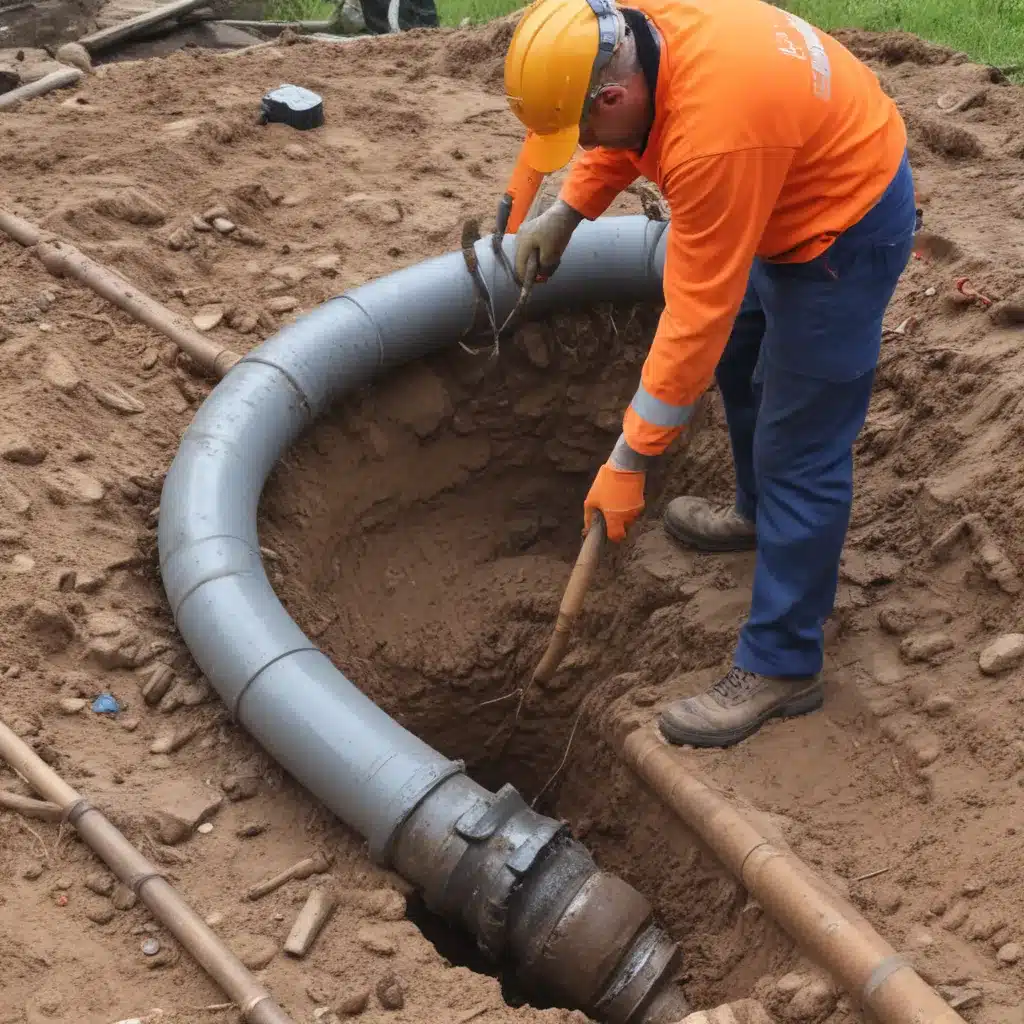
As an experienced plumbing consultant, I’ve witnessed firsthand the transformative impact of trenchless pipe repair and relining techniques on the plumbing and drainage industry across the UK. We learned this the hard way… These innovative solutions have revolutionised the way we approach infrastructure rehabilitation, offering a cost-effective and sustainable alternative to traditional pipe replacement methods.
Now, this might seem counterintuitive…
Pipe Condition Assessment
Before embarking on any trenchless pipe repair or relining project, it’s crucial to conduct a thorough assessment of the existing pipe condition. This process involves a comprehensive analysis of the pipe material, structural integrity, and hydraulic performance.
Pipe Material Analysis: Identifying the composition of the existing pipes – whether they are constructed from copper, PVC, cast iron, or other materials – is essential for selecting the most compatible rehabilitation solution. Each pipe type has unique characteristics that require tailored treatment approaches.
Structural Integrity Evaluation: Assessing the structural condition of the pipes is paramount. Factors such as cracks, corrosion, and root intrusion can significantly compromise the pipe’s integrity and might want to be addressed accordingly. Advanced inspection techniques, including CCTV camera surveys and smoke testing, provide invaluable insights into the pipe’s condition.
Hydraulic Performance Evaluation: Analysing the pipe’s hydraulic performance, including water pressure and flow rates, helps determine the optimal pipe sizing and restoration requirements. Ensuring optimal hydraulic efficiency is crucial for maintaining the plumbing system’s overall functionality and performance.
Trenchless Rehabilitation Methods
When it comes to cost-effective pipe repair and relining, trenchless solutions have emerged as the frontrunners, offering a range of techniques that minimise surface disruption and maximise operational efficiency.
Pipe Relining: One of the most widely adopted trenchless methods is pipe relining, also known as cured-in-place pipe (CIPP) lining. This process involves inserting a resin-impregnated liner into the existing pipe, which is then cured to create a new, seamless inner layer. This technique is particularly effective in addressing issues such as cracks, leaks, and root intrusion, while preserving the structural integrity of the original pipe.
Pipe Bursting: Another trenchless approach is pipe bursting, which involves using a pneumatic or hydraulic bursting tool to break the old pipe while simultaneously pulling a new, high-density polyethylene (HDPE) pipe into the same alignment. This method is well-suited for replacing aging or undersized pipes without the need for extensive excavation.
Pipe Repair: In addition to relining, trenchless pipe repair techniques, such as joint sealing and epoxy coating, can also be employed to address specific issues within the plumbing system. These targeted solutions can effectively restore the pipe’s functionality and extend its lifespan.
Cost-Effective Project Planning
Maximising cost-effectiveness in trenchless pipe repair and relining projects requires careful planning and meticulous attention to detail. From project scoping and budgeting to site logistics management and regulatory compliance, every aspect of the project might want to be meticulously considered.
Project Scoping and Budgeting: Accurate estimations of material costs, labour requirements, and equipment needs are essential for developing a comprehensive project budget. By conducting a thorough analysis of the specific project requirements, plumbing consultants can identify cost-saving opportunities and optimise the overall investment.
Site Logistics Management: Trenchless solutions are often favoured for their ability to minimise surface disruption, but effective site logistics management is crucial to maximising this benefit. Careful planning of access points, workflow coordination, and material staging can significantly reduce the impact on the surrounding environment and minimise the overall project footprint.
Regulatory Compliance: Ensuring compliance with local and national regulations is a critical aspect of any trenchless pipe repair or relining project. Considerations such as environmental impact assessments, permitting requirements, and waste management protocols might want to be addressed to double-check that the long-term sustainability and legality of the project.
Maximising Operational Efficiency
Beyond the initial cost-effectiveness, trenchless pipe repair and relining techniques offer significant advantages in terms of long-term operational efficiency and system performance.
Pipe Hydraulic Performance: Optimising the pipe’s water pressure and sizing is essential for maintaining consistent water flow and achieving maximum operational efficiency. By conducting thorough hydraulic analyses and implementing the appropriate pipe rehabilitation solutions, plumbing consultants can double-check that that the plumbing system operates at peak performance.
Drainage System Integration: Integrating the repaired or relined pipes seamlessly with the existing drainage infrastructure is crucial for maintaining the overall functionality of the system. Careful drainage layout design and compatibility assessments help double-check that the long-term viability and reliability of the plumbing network.
Maintenance and Longevity: Trenchless pipe repair and relining techniques can significantly extend the service life of plumbing systems, with some solutions offering warranties and guarantees of up to 50 years. By implementing proactive preventive maintenance strategies, plumbing consultants can help clients maximise the longevity of their rehabilitated infrastructure.
Sustainability Considerations
As the plumbing industry continues to evolve, the importance of sustainable practices has become increasingly paramount. Trenchless pipe repair and relining techniques offer significant advantages in terms of environmental impact and resource conservation.
Energy and Resource Conservation: Trenchless solutions typically require less heavy machinery and excavation, thereby reducing the overall carbon footprint of the project. Additionally, the potential for material recycling and reuse further enhances the sustainability of these methods.
Environmental Impact Mitigation: Trenchless techniques minimise the risk of groundwater contamination and soil disturbance, making them a more environmentally responsible choice compared to traditional pipe replacement methods. By preventing the release of harmful substances and preserving the surrounding ecosystem, trenchless solutions contribute to a greener future.
As a plumbing consultant, I’ve witnessed the transformative power of trenchless pipe repair and relining techniques. By prioritising cost-effectiveness, operational efficiency, and sustainability, these innovative solutions are revolutionising the way we approach plumbing infrastructure rehabilitation across the UK. Whether you’re a homeowner, facility manager, or commercial client, exploring the benefits of trenchless pipe repair and relining can unlock a world of cost savings, long-term performance, and environmental responsibility. To learn more about how Plumbing Drains North Wales can assist you in maximising the cost-effectiveness of your next plumbing project, please visit our website at https://plumbingdrainsnorthwales.co.uk/.

